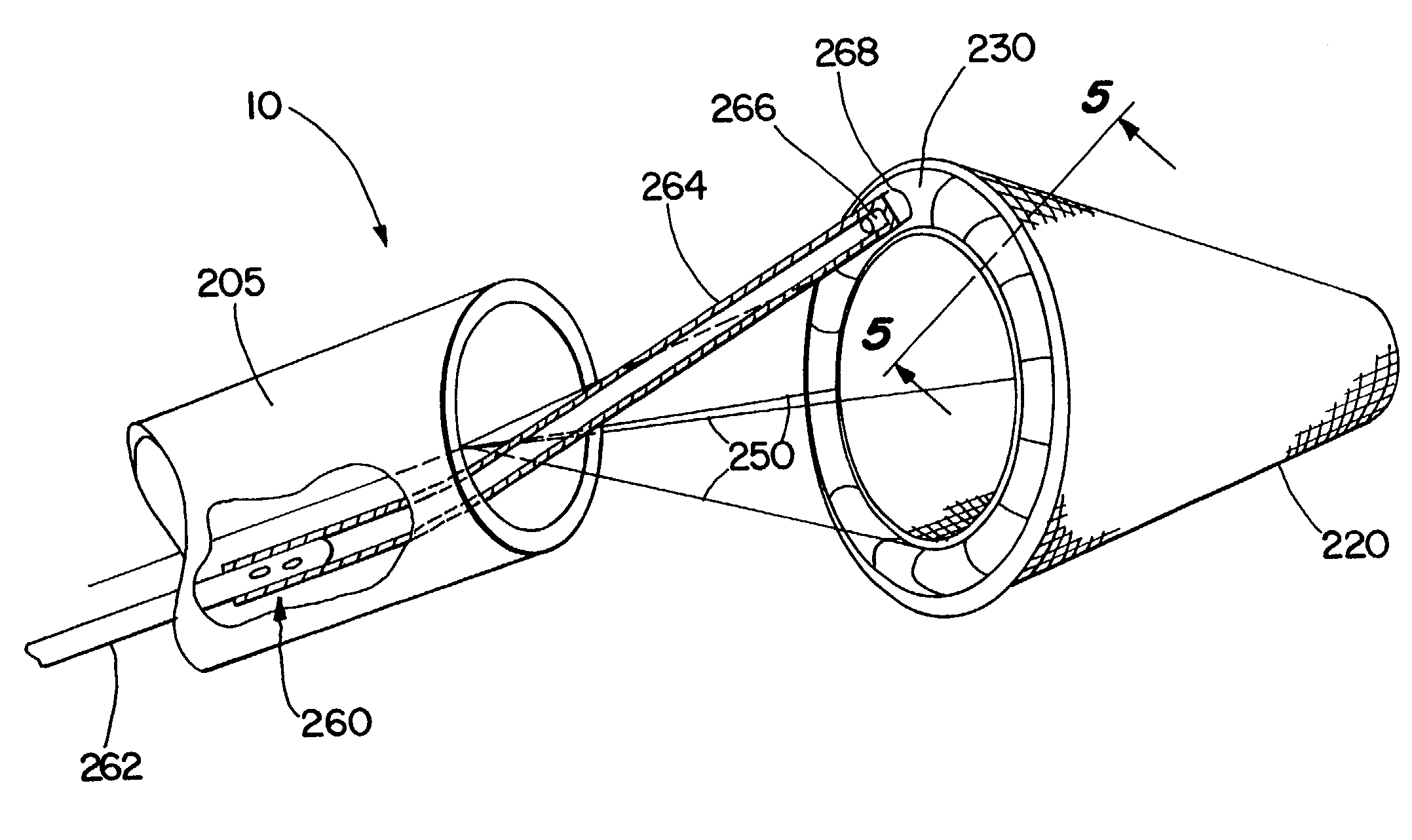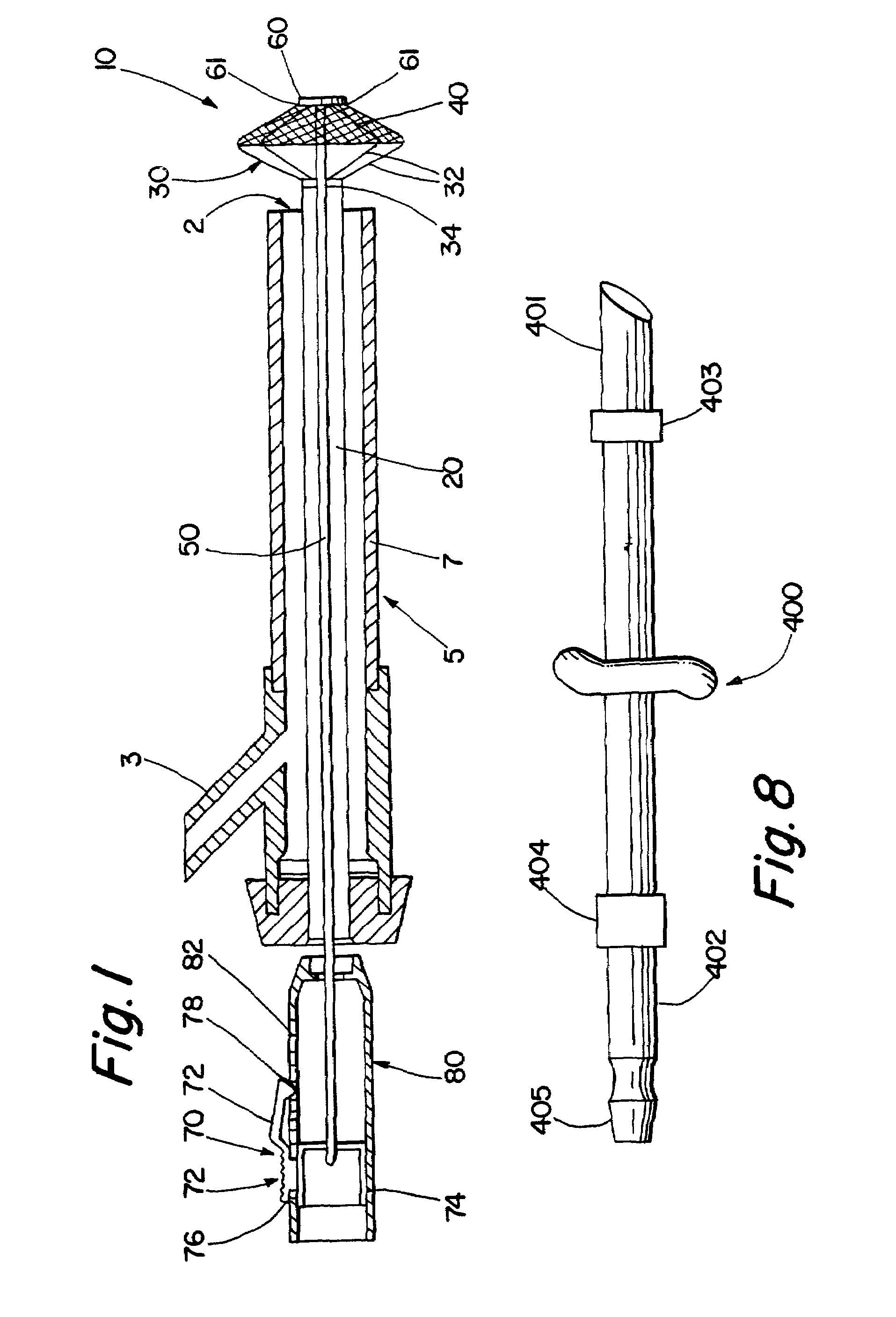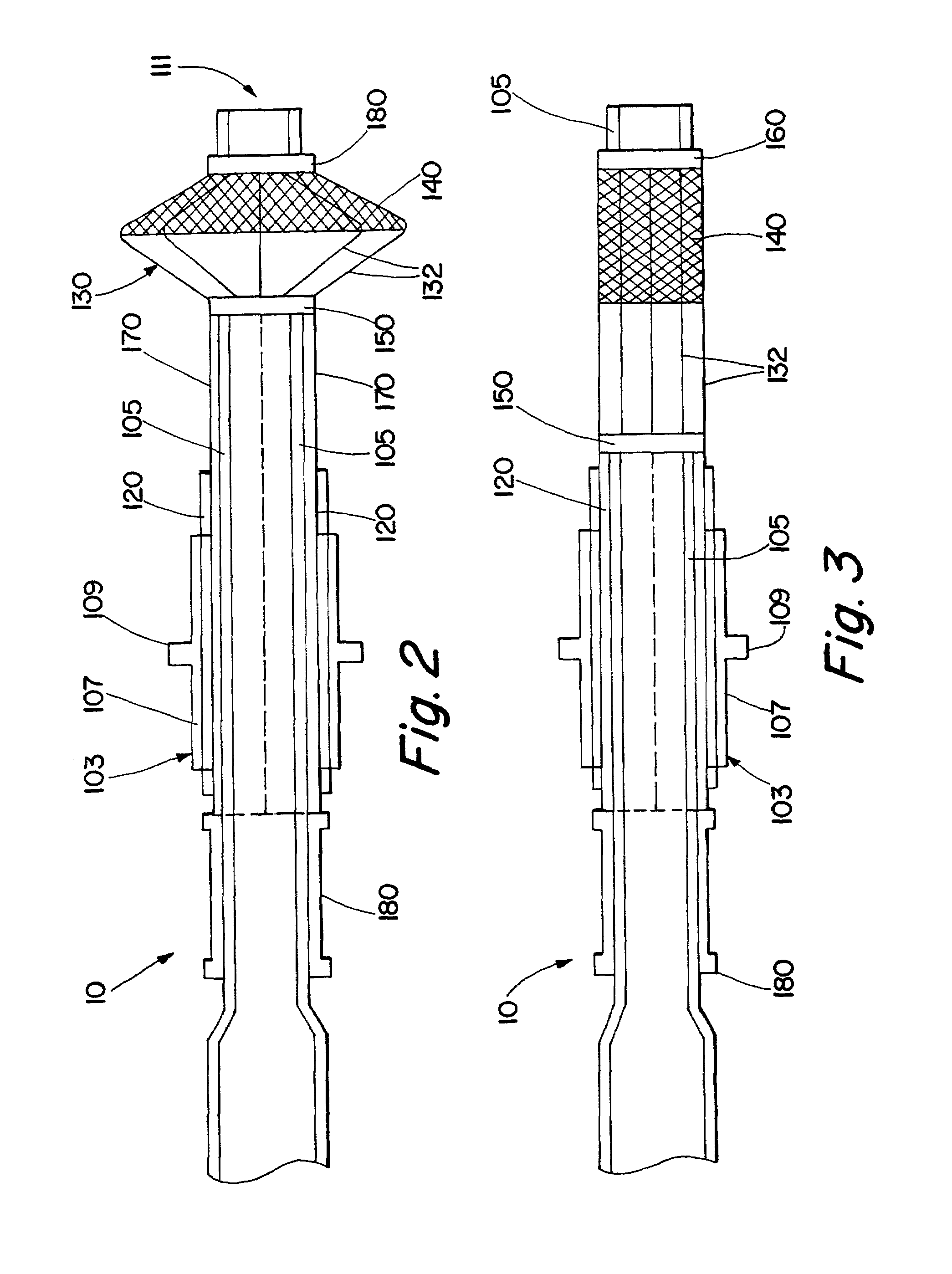Cannula with associated filter and methods of use during cardiac surgery
a technology of blood filter and cannula, which is applied in the field of blood filter devices, can solve problems such as complications in the body, and achieve the effects of reducing neurologic, cognitive, cardiac, and neurological complications, reducing the number of complications, and effectively filtering blood
- Summary
- Abstract
- Description
- Claims
- Application Information
AI Technical Summary
Benefits of technology
Problems solved by technology
Method used
Image
Examples
Embodiment Construction
[0068]Referring more particularly to the drawings, FIG. 1 shows one embodiment of the blood filter device for use herein. The blood filter device 10 comprises an insertion tube 20, an umbrella frame 30, and an end plate 60, an activation tube 50, a mesh 40, an adjustment device 70, and a handle 80.
[0069]The device 10 is introduced into a vessel through a main port 7 of a cannula 5, and blood or other surgical equipment may be introduced into the main port 7 of the cannula 5 through a side port 3. The cannula 5 and the device 10 will not interfere with placement of equipment which may be used during a surgical procedure.
[0070]As shown in FIG. 1, the umbrella frame 30 comprises a plurality of arms 32 (some of which are not shown), which may include 3 arms, more preferably 4 arms, more preferably 5 arms, more preferably 6 arms, more preferably 7 arms, more preferably 8 arms, more preferably 9 arms, and most preferably 10 arms. The arms are sonically welded to a socket 34, which in turn...
PUM
 Login to View More
Login to View More Abstract
Description
Claims
Application Information
 Login to View More
Login to View More - R&D
- Intellectual Property
- Life Sciences
- Materials
- Tech Scout
- Unparalleled Data Quality
- Higher Quality Content
- 60% Fewer Hallucinations
Browse by: Latest US Patents, China's latest patents, Technical Efficacy Thesaurus, Application Domain, Technology Topic, Popular Technical Reports.
© 2025 PatSnap. All rights reserved.Legal|Privacy policy|Modern Slavery Act Transparency Statement|Sitemap|About US| Contact US: help@patsnap.com



